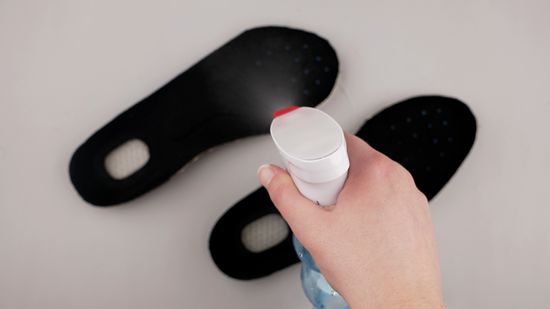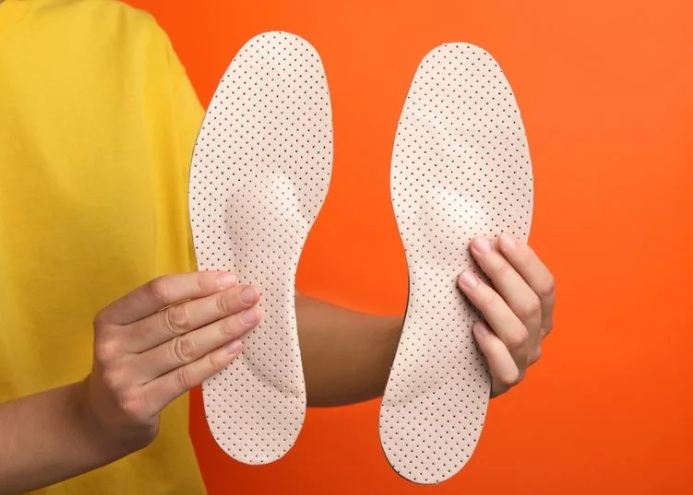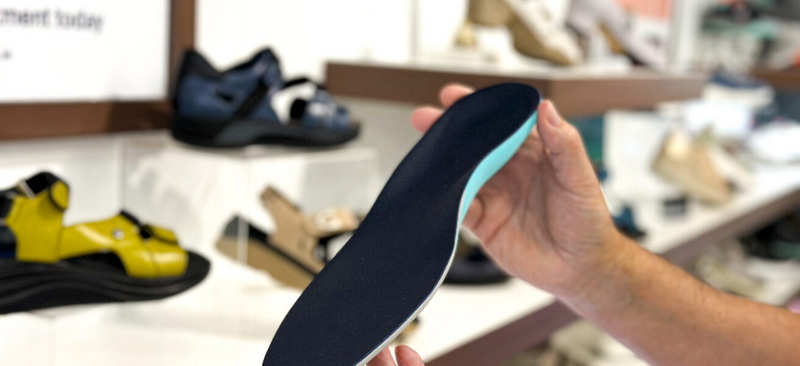Views: 222 Author: Edvo Publish Time: 2025-10-20 Origin: Site











Content Menu
● Understanding Orthotic Insoles
● Step-by-Step Guide: How To Clean Orthotics Insoles
>> Step 2: Prepare a Cleaning Solution
>> Step 3: Gently Scrub the Surface
● Daily and Weekly Maintenance Tips
● How to Clean Specific Types of Insoles
>> Gel Insoles
>> Cork Insoles
● Odor Control and Disinfection Techniques
● How To Clean Orthotics Insoles Using Natural Ingredients
● How to Store Orthotic Insoles
● Tips for Athletes and Active Lifestyles
● FAQs About Cleaning Orthotic Insoles
>> 1. How often should I clean my orthotic insoles?
>> 2. Can I machine wash or dry my insoles?
>> 3. What is the best way to remove odor from insoles?
>> 4. How long do orthotic insoles last with proper maintenance?
>> 5. Is it safe to clean all types of orthotics the same way?
Orthotic insoles are vital for maintaining foot health, providing arch support, and improving comfort during daily activities. Over time, sweat, odor, and bacteria can build up, reducing their effectiveness and comfort. Regular cleaning is essential for extending the lifespan of your orthotics and keeping your shoes fresh. In this detailed guide, we'll explain how to clean orthotic insoles safely, effectively, and without damaging their materials.

Orthotic insoles, also known as orthoses, are specialized inserts used to correct walking patterns, reduce foot fatigue, and support proper posture. They are popular among individuals with flat feet, plantar fasciitis, heel pain, or joint problems. Orthotics can be custom-made by podiatrists or prefabricated for general retail.
Common materials include:
- EVA foam: Lightweight, flexible, and shock-absorbing.
- Gel: Delivers superior cushioning and impact resistance.
- Leather: Breathable, natural, and elegant in finish.
- Thermoplastic: Rigid material often used in corrective orthotics.
- Cork: Eco-friendly and moisture-absorbent.
Each type of insole has unique properties and care requirements. For instance, foam and gel insoles handle mild washing well, while leather varieties require more delicate surface cleaning.
Cleaning your orthotic insoles doesn't have to be complicated. The key is using gentle products and avoiding excessive moisture. Follow these professional steps for optimal results.
First, remove the insoles from your shoes. This ensures that both the shoes and insoles dry separately, preventing mold or odor buildup inside the footwear.
Mix warm water with a small amount of mild antibacterial soap or gentle detergent. The water should be lukewarm—not hot—to prevent material damage. Avoid bleach, ammonia, or alcohol-based cleaners.
Dip a soft sponge or toothbrush into the cleaning solution. Use light circular motions to scrub dirt, sweat, and oil off the insole surface. Focus on the heel and toe sections where the most dirt accumulates.
If you have heavily soiled insoles, add a teaspoon of baking soda to the cleaning solution for extra stain-breaking power.
Wipe off all soap residue with a clean, damp cloth. Never soak orthotics or rinse them directly under running water for too long—it can loosen adhesives or alter their shape.
Lay the insoles flat in a shaded, well-ventilated area. Allow them to dry completely before placing them back into shoes. Avoid dryers, radiators, or direct sunlight, which can shrink or harden materials.
To keep your insoles clean and odor-free between washes:
- Remove them at night to air out.
- Sprinkle baking soda on them overnight to absorb moisture.
- Use odor-absorbing shoe bags or cedar shoe trees.
- Wipe the surface with an antibacterial wipe every few days.
- Ensure socks are clean and dry before wearing shoes.
Small, frequent cleaning habits prevent odor and bacteria buildup, extending your insoles' lifespan.
If your insoles still retain odor or residue after light cleaning:
1. Submerge them in a mild soap solution for 5 to 10 minutes.
2. Lightly scrub both sides with a soft brush.
3. Rinse and dry as described above.
4. After drying, apply a foot-safe disinfectant spray or odor neutralizer.
Monthly deep cleaning is particularly useful for gym users or individuals who wear orthotics for long hours daily.
Every insole material has a different tolerance to moisture, temperature, and cleaning products. Below are best practices by type.
- Mix soap and warm water in a bowl.
- Use a soft sponge to clean dirt and stains gently.
- Avoid twisting or wringing to prevent cracking.
- Dry at room temperature on a flat surface.
- Clean only with a damp cloth and mild soap.
- Do not soak; the gel layer may separate.
- Dry flat in indirect light to maintain their form.
- Wipe gently with a damp cloth using a small amount of pH-neutral leather cleaner.
- Once dry, apply a leather balm or conditioner to maintain texture.
- Keep away from heat sources or water immersion.
- Use a slightly damp cloth to clean the surface.
- Never immerse in water since materials can deform.
- Store flat once dry, ideally with foot powder to absorb any residual moisture.
- Mix warm water with gentle soap and clean using a soft brush.
- Rinse quickly to avoid saturation.
- Oil occasionally with natural cork conditioner to maintain elasticity.

Even the cleanest insoles can develop odor if exposed to sweat and bacteria regularly. Combine cleaning with proper disinfection:
- Vinegar rinse: Mix equal parts white vinegar and water, lightly spray, and wipe dry.
- Baking soda treatment: Sprinkle directly on the surface and leave overnight.
- Hydrogen peroxide spray: Acts as a disinfectant and brightener.
- Natural essential oils: Apply a few drops of tea tree, lavender, or eucalyptus oil for antibacterial effects.
If possible, rotate your shoes daily so your insoles can air out fully between uses.
For people with sensitive skin or allergies, natural cleaning alternatives work effectively without harsh chemicals.
1. Baking Soda Paste: Mix with water to form a mild paste. Apply to stubborn stains, let sit for 10 minutes, then wipe clean.
2. Apple Cider Vinegar Spray: Natural antibacterial and deodorizing agent. Use sparingly and follow with thorough airing.
3. Lemon Juice + Salt Mix: Removes lingering odors while leaving a fresh scent.
4. Tea Tree Oil Solution: Add a few drops to cleaning water for antimicrobial protection.
These methods not only keep your insoles hygienic but also environmentally friendly.
- Machine washing or drying: Can deform and separate insoles.
- Using bleach or alcohol: Causes discoloration and material breakdown.
- Skipping drying time: Re-wearing damp insoles encourages fungal growth.
- Neglecting routine cleaning: Leads to odor buildup and bacterial contamination.
- Using too much water: Over-saturation affects adhesive and material strength.
Always handle your orthotic insoles carefully—gentle cleaning preserves both their shape and support.
Custom orthotics often cost more because of their personalized design and medical-grade materials. To maintain effectiveness:
- Clean the surface gently with a damp cloth.
- Dry at room temperature for at least 24 hours.
- Avoid strong disinfectants that can erode coatings.
- Inspect regularly for cracks, flattening, or peeling.
- Store away from moisture and direct sunlight.
Regular maintenance extends their lifespan, ensuring consistent orthopedic support.
Proper storage contributes to the freshness and longevity of your insoles:
- Store insoles in a dry, well-ventilated space.
- Keep them flat to prevent misshaping.
- Avoid sealed plastic bags that trap moisture.
- Use fabric pouches or breathable containers.
- Add silica gel packs or charcoal pads for moisture absorption.
If you travel frequently, consider carrying a spare pair in a separate breathable shoe pouch.
If you wear orthotics for running, training, or sports:
- Air dry them immediately after workouts.
- Spray with a natural disinfectant after every use.
- Replace running shoe insoles more frequently due to sweat exposure.
- Consider anti-microbial orthotic covers for better hygiene.
- Keep an extra pair for rotation during intense training seasons.
This prevents bacterial build-up and keeps your insoles performing optimally under stress conditions.
Keeping your orthotic insoles clean is not only about hygiene—it's about comfort, health, and preserving functionality. A regular cleaning schedule, gentle handwashing, and proper drying reduce bacteria and odor while extending your insoles' life. Whether you wear custom or standard orthotics, treating them carefully ensures ongoing support, stability, and comfort for your feet every day.

Clean your insoles every 2–3 weeks or more often if you sweat heavily or exercise daily. Allow them to air dry after each use.
No. Machine washing can damage their structure and adhesives. Always hand wash with mild soap and air dry.
Sprinkle baking soda overnight, or use a vinegar-water spray solution to kill bacteria naturally.
Most insoles last 6–12 months, but custom orthotics can last several years with careful cleaning and maintenance.
No. Always check the material type—foam, leather, or thermoplastic—and use cleaning methods suitable for each to avoid permanent damage.